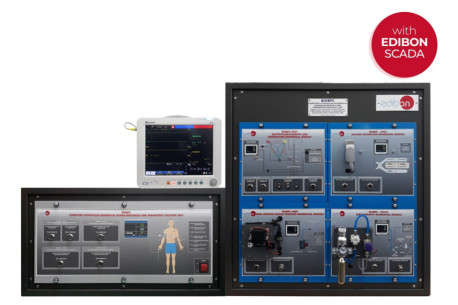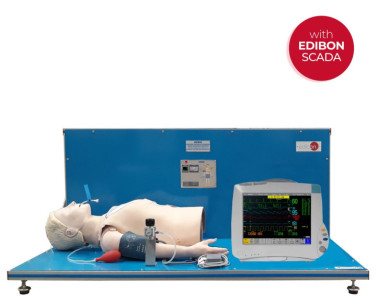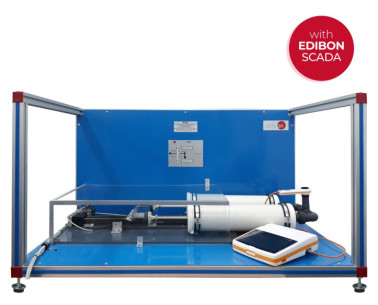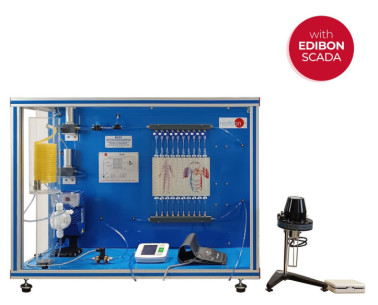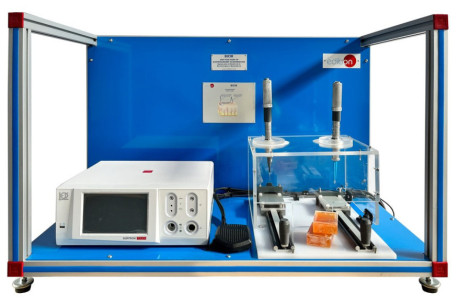- Início
- Produtos
- 1.- FÍSICA
- PROGRAMAS ACADÊMICOS
- EDUCAÇÃO TÉCNICA SUPERIOR
- ENGENHARIA DE ALIMENTOS
- ENGENHARIA TOPOGRAFÍCIA
- GEOLOGIA
- ENGENHARIA FLORESTAL
- ENGENHARIA AMBIENTAL
- ENGENHARIA ECOLÓGICA
- ENGENHARIA TÊXTIL
- ENGENHARIA PARA INDÚSTRIAS AGRÍCOLAS
- ENGENHARIA MECÂNICA
- QUÍMICA
- ENGENHEIRO QUÍMICA
- ENGENHARIA DE PROCESSOS
- ENGENHARIA GEOLÓGICA, MINERAÇÃO E PETRÓLEO
- CENTRO DE FORMAÇÃO DE PETRÓLEO
- ENGENHARIA NAVAL
- ENGENHARIA AGRÍCOLA
- ENGENHARIA ELETRÔNICA
- ARQUITETURA
- CIÊNCIA DA COMPUTAÇÃO E ENGENHARIA
- ENGENHARIA NUCLEAR
- ENGENHARIA AUTOMÁTICA
- ENGENHARIA ENERGÉTICA
- CENTRO DE FORMAÇÃO DE ENERGIA
- ENGENHARIA ELÉTRICA
- ENGENHARIA DE SISTEMAS
- ENGENHARIA AERONÁUTICA
- ENGENHARIA DO OCEANO E CIÊNCIAS MARINHAS
- FÍSICA
- ENGENHARIA INDUSTRIAL
- CENTRO INTERNACIONAL DE FORMAÇÃO TÉCNICA, DESENVOLVIMENTO E INVESTIGAÇÃO
- ENGENHARIA DE MATERIAIS
- ENGENHARIA METALÚRGICA
- ENGENHARIA CIVIL
- ENGENHARIA DE TELECOMUNICAÇÃO
- ENGENHARIA TÉRMICA
- ESCOLAS TÉCNICAS
- ELETRÔNICA
- COMUNICAÇÕES
- ELETRICIDADE
- CIÊNCIA DA COMPUTAÇÃO E ENGENHARIA
- TECNOLOGIA AUTOMOTIVA
- ENGENHARIA CIVIL
- MECÂNICA E FABRICAÇÃO
- MECÂNICA E METAL
- MECÂNICA DE FLUÍDOS
- REFRIGERAÇÃO E AR CONDICIONADO
- QUÍMICA INDUSTRIAL
- QUÍMICA
- TECNOLOGIA DE ALIMENTOS
- AGRICULTURA
- INDÚSTRIA AGRÍCOLA
- MANUTENÇÃO
- MARÍTIMO E PESCA
- MANUTENÇÃO AERONÁUTICA
- INSTRUMENTAÇÃO E CONTROLE
- MEIO AMBIENTE
- TECNOLOGIA
- TECNOLOGIA DA CONSTRUÇÃO
- TECNOLOGIA ELETROMECÂNICA
- TECNOLOGIA DE DESIGN ESTRUTURAL
- TECNOLOGIA DE PRODUÇÃO INDUSTRIAL
- TECNOLOGIA DA INFORMAÇÃO
- CONTROLE DE QUALIDADE
- TECNOLOGIA DE SISTEMAS DE ENERGIA
- TECNOLOGIA MINERAL E PETROLÍFERA
- TECNOLOGIA DE GÁS NATURAL
- ENERGIAS RENOVÁVEIS
- TECNOLOGIA DE TELECOMUNICAÇÕES
- TECNOLOGIA MECÂNICA
- TECNOLOGIA EÓLICA
- TECNOLOGIA NUCLEAR
- TECNOLOGIA DE CONTROLE DE PROCESSOS
- TECNOLOGIA DE SERVIÇOS GERAIS
- TECNOLOGIA DE LABORATÓRIO
- AUTOMAÇÃO E MECATRÔNICA
- TRANSPORTE E LOGÍSTICA
- EDUCAÇÃO TÉCNICA SUPERIOR
- 2.- ELETRÔNICA
- 3.- COMUNICAÇÕES
- 4.- ELETRICIDADE
- 5.- ENERGIA
- 5.1.- SMART GRIDS E SISTEMAS DE POTÊNCIA
- 5.2.- MICRO-REDES
- 5.3.- ENERGIAS RENOVÁVEIS
- 5.3.1.- ENERGIA SOLAR FOTOVOLTAICA
- 5.3.2.- ENERGIA SOLAR TÉRMICA
- 5.3.3.- ENERGIA EÓLICA
- 5.3.4.- ENERGIA MARINHA
- 5.3.5.- ENERGIA GEOTÉRMICA
- 5.3.6.- ENERGIA HIDRÁULICA
- 5.3.7.- BIOCOMBUSTÍVEIS
- 5.3.8.- SISTEMAS DE ARMAZENAMENTO
- 5.3.9.- CÉLULAS A COMBUSTÍVEL DE HIDROGÊNIO
- 5.3.10.- TURBINAS A VAPOR E CICLOS ORGÂNICOS RANKINE
- 5.3.11.- OUTROS SISTEMAS NÃO CONVENCIONAIS
- 5.4.- ENERGIAS CONVENCIONAIS
- 5.5.- ARMAZENAMENTO DE ENERGIA
- 5.6.- ALTA TENSÃO E SISTEMAS ELÉTRICOS DE PROTEÇÃO
- 5.7.- INSTALAÇÕES E MANUTENÇÃO
- 6.- MECATRÔNICA E AUTOMAÇÃO
- 7.- MECÂNICA
- 8.- MECÂNICA DE FLUIDOS
- 9.- TERMODINÂMICA E TERMOTÉCNICA
- 9.1.- FUNDAMENTOS E CONCEITOS BÁSICOS DE TERMODINÂMICA
- 9.2.- VENTILAÇÃO, CALEFAÇÃO, AR CONDICIONADO E ÁGUA QUENTE SANITÁRIA
- 9.3.- BOMBAS DE CALOR
- 9.4.- REFRIGERAÇÃO
- 9.5.- SISTEMA DE TUBULAÇÃO HIDRÁULICA TÉRMICA
- 9.6.- TRANSFERÊNCIA DE CALOR
- 9.7.- TROCADORES DE CALOR
- 9.8.- MÁQUINAS TÉRMICAS
- 9.9.- MOTORES DE COMBUSTÃO INTERNA
- 9.10.- INSTALAÇÕES E MANUTENÇÃO
- 10.- CONTROLE DE PROCESSOS
- 11.- ENGENHARIA QUÍMICA
- 11.1.- OPERAÇÕES UNITÁRIAS
- 11.1.1.- FLUIDIZAÇÃO
- 11.1.2.- EVAPORAÇÃO
- 11.1.3.- EBULIÇÃO
- 11.1.4.- DESTILAÇÃO E CRAQUEAMENTO
- 11.1.5.- EXTRAÇÃO
- 11.1.6.- DIFUSÃO
- 11.1.7.- SECAGEM E ARREFECIMENTO
- 11.1.8.- ABSORÇÃO E ADSORÇÃO
- 11.1.9.- TROCA IÔNICA E CORROSÃO
- 11.1.10.- CRISTALIZAÇÃO E PIRÓLISE
- 11.1.11.- FILTRAGEM, SEDIMENTAÇÃO E MISTURA
- 11.1.12.- TRATAMENTO DE SÓLIDOS
- 11.2.- REATORES QUÍMICOS
- 11.1.- OPERAÇÕES UNITÁRIAS
- 12.- TECNOLOGIA DE ALIMENTOS E ÁGUAS
- 13.- MEIO AMBIENTE
- 14.- ENGENHARIA BIOMÉDICA
- 14.1.- BIOMECÂNICA
- 14.1.1.- KITS DE FUNDAMENTOS DE MECÂNICA
- 14.1.2.- MÁQUINAS SIMPLES
- 14.1.3.- ESTÁTICA E DINÂMICA
- 14.1.4.- VIBRAÇÕES E OSCILAÇÕES
- 14.1.5.- TRIBOLOGIA (ATRITO, DESGASTE, LUBRIFICAÇÃO)
- 14.1.6.- MECÂNICA DE ESTRUTURAS
- 14.1.7.- FOTOELASTICIDADE E EXTENSOMETRIA
- 14.1.8.- ENSAIOS MECÂNICOS
- 14.1.9.- ENSAIOS ACÚSTICOS E TÉRMICOS
- 14.2.- ELETRÔNICA BIOMÉDICA
- 14.3.- EQUIPAMENTO BIOMÉDICO
- 14.1.- BIOMECÂNICA
- ACESSÓRIOS DE LABORATÓRIO
- PLANTAS PILOTO PERSONALIZADAS
- MÓDULOS
- EXPANSÕES
- LABORATÓRIOS
- Linhas de Negócio
- Tecnología
- Repositorio de materiales
- Sobre nós
- Notícias
- Contacte-nos
Biomedical engineering and its importance for the medical sector.
What is biomedical engineering?
When did biomedical engineering begin?
Formal biomedical engineering as a field began to take shape in the 1950s and 1960s. As medical technology and healthcare advanced, there emerged a need to apply engineering principles to medicine, aiming to enhance patient diagnosis, treatment, and care. While the concepts and collaboration between engineers and medical professionals had existed before, it was during this period that specific academic programs in biomedical engineering began to be established.
Since then, biomedical engineering has significantly expanded, encompassing a wide range of application areas including medical instrumentation, medical imaging, biomechanics, bioinformatics, medical devices, nanotechnology in medicine, and more. As technology continues to progress and medical needs evolve, biomedical engineering continues to grow and play an essential role in developing innovative solutions for the healthcare field.
What is the main goal of biomedical engineering?
The primary objective of biomedical engineering is to enhance the quality of healthcare, streamline disease diagnosis and treatment, and develop medical devices and systems that contribute to enhancing the health and well-being of individuals.
What does a biomedical engineer do?
Biomedical engineers operate across a broad spectrum of domains, such as designing cutting-edge medical equipment, advancing medical imaging technologies like magnetic resonance imaging (MRI) and computed tomography (CT) scans, crafting prosthetics and assistive devices for individuals with disabilities, researching diagnostic systems, managing health data, and implementing medical technologies within clinical settings.
As such, a strong understanding of both engineering principles and biology and medicine is requisite. Professionals in this field collaborate closely with physicians, scientists, and other healthcare experts to devise innovative solutions that benefit both patients and medical professionals.


What do we do at EDIBON to contribute to the learning and research of biomedical engineers?
After many years of research and collaboration with professors and researchers, at EDIBON, we have developed educational and research equipment to assist in the learning process during the formative stage and to aid research in this rapidly growing and evolving field.
For this reason, we offer training equipment that can be installed in laboratories, complementing theoretical studies from the beginning with biomechanics (studying the mechanics of movement and understanding the movement of living organisms, including human body movement). This is followed by electronics applied to biomedical engineering, enabling sufficient knowledge for the subsequent development of biomedical instrumentation. The process culminates with biomedical equipment to comprehend the functioning of materials used in places such as hospitals and healthcare centers.
Equipment like our Computer Controlled Human Biosignals and Parameters Teaching Unit (BIHBPC), Computer Controlled Biomedical Patient Biosignals Simulator (BIPBSC), Computer Controlled Spirometry Teaching Unit (BISBC), Computer Controlled Biomedical Circulatory System Teaching Unit (BICSC) and Unit for Study of Electrosurgery in Biomedicine (BICIR), assist students, professors, and researchers in advancing this remarkable discipline.
 Preferências de cookies
Preferências de cookies

